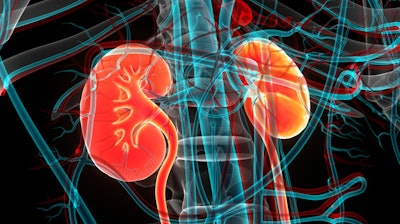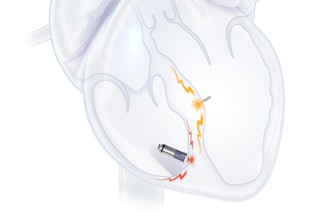
Delivering drugs to the kidney is difficult by nature of the organ’s function – to remove waste products and produce urine. To overcome this issue, researchers have developed a new minimally invasive method with significant improvements over conventional approaches.
The invention is a novel two-part catheter system that delivers drugs directly to the kidney and was developed in direct response to unmet patient needs, explained Omer Raheem, urologist and assistant professor of surgery at the University of Chicago.
Raheem and longtime collaborator Mohamed Kamel, who specializes in treating urologic oncology patients, spent long phone calls brainstorming the new design, which they have patented with the Polsky Center for Entrepreneurship and Innovation.
“We share a passion for improving patient care,” said Kamel, speaking about his relationship with Raheem, which goes back more than 20 years through their initial training and career development. “We took this as a challenge for the both of us to find this solution and we worked together through several meetings, using our experience in urology to come up with this idea.”
The novel design is cost-effective and easy to manufacture, and has a significant market potential, according to the researchers. Importantly, it also is convenient for both patients and providers, as it can be changed in an outpatient setting and is inserted in a path familiar to urologists and interventional radiologists.
“The device would enable repeated access to the kidneys over time, without incisions or repeated administration of general anesthetic,” explained Raheem, whose research has been published in over 150 peer-reviewed publications and nine book chapters.
The team has developed a prototype that they described as “simple and intuitive.”
 The above diagram shows how the catheter system would interact with the kidney. Balloons allow the catheter to stay in place while treatment is being delivered and the drug elution ports at the tip of the device allow for liquid drug to be delivered directly into the kidney. For patients who are likely to need further treatments, the systems can remain in the patient for days, weeks, or more.Polsky
The above diagram shows how the catheter system would interact with the kidney. Balloons allow the catheter to stay in place while treatment is being delivered and the drug elution ports at the tip of the device allow for liquid drug to be delivered directly into the kidney. For patients who are likely to need further treatments, the systems can remain in the patient for days, weeks, or more.Polsky
“It could be used for any type of kidney disease, including delivering chemo agents for kidney cancers or antibiotics for kidney infections,” said Ben Cox, a manager of intellectual property and technology development at the Polsky Center who helped generate the CAD model and detailed drawings based on the initial sketches.
“Being in the university setting you meet a lot of people from different disciplines who can bring their expertise from different angles,” noted Raheem, adding that the Polsky Center has been helpful in “connecting the dots” and offering resources, such as the I-Corps program. The program empowers UChicago scientists, researchers, and students to test the commercial potential of their research and ideas.






















